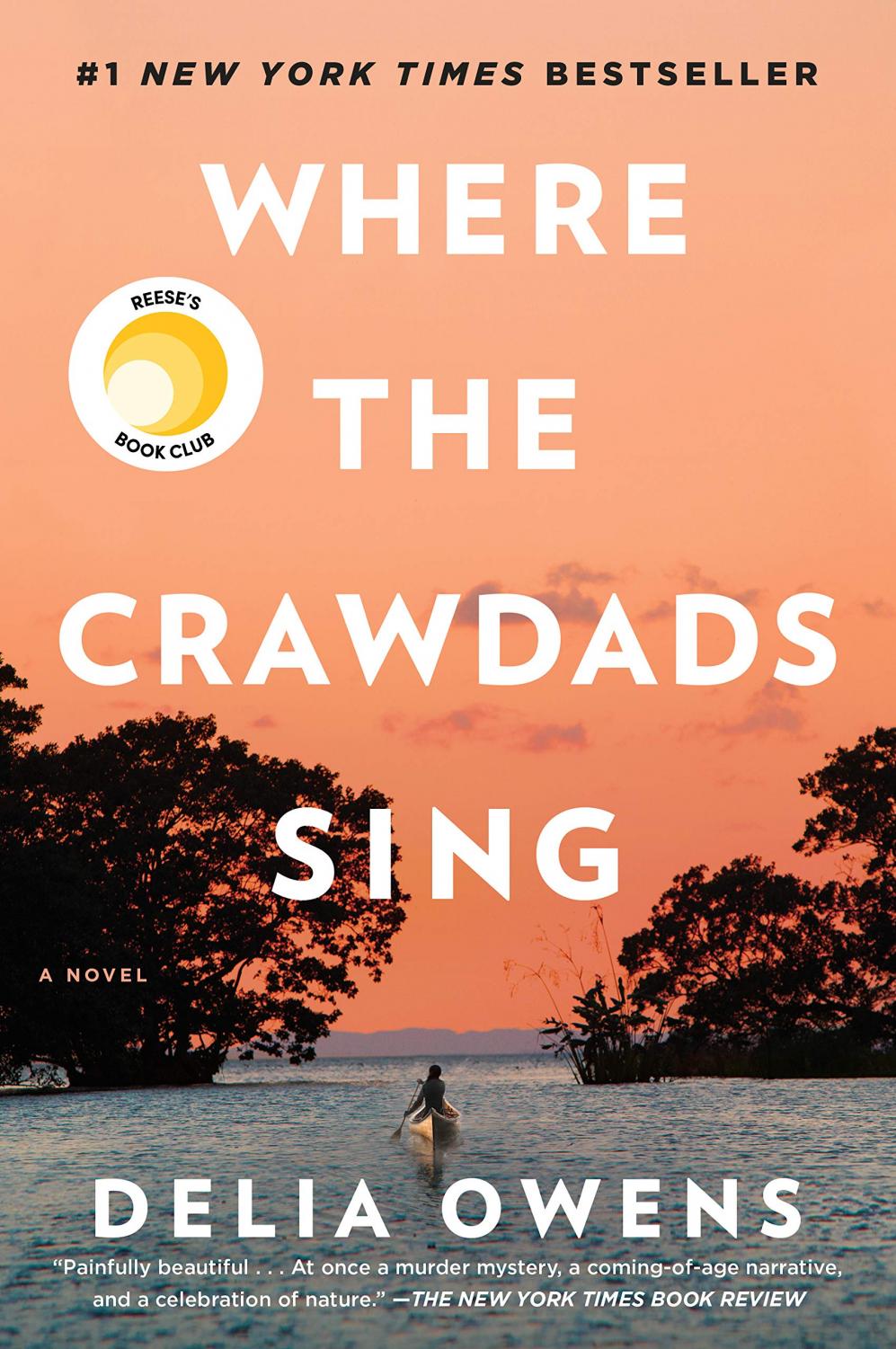Crawdads sparkles without substance

Author and biologist Delia Owens’s bestselling debut novel, “Where the Crawdads Sing,” was published in 2018 but catapulted to the top of the 2019 bestseller list and received ceaseless adulation from figures like Oprah Winfrey and Reese Witherspoon by blending young adult fiction, romance and mystery. However, this sweeping blend of styles is also its downfall — Owens depends on the clichés of these genres to amass a saccharine mess of a novel.
The story begins with Kya, age 6, and her family who live near a marsh in a coastal North Carolina town. Poverty and familial turmoil compel each family member to leave until Kya is left abandoned. Aided by a family nearby and her friend Tate, Kya lives in the marsh and becomes literate despite avoiding school. Years pass until the story returns to find her implicated in a murder.
For Kya, the swamp is more than her home but a refuge from the difficulties and disappointments of the outside world. Owens excels at rendering the rapture of Kya’s perspective in incandescent prose.
Owens writes, “Marsh is a space of light, where grass grows in water, and water flows into the sky. Slow-moving creeks wander, carrying the orb of the sun with them to the sea, and long-legged birds lift with unexpected grace — as though not built to fly — against the roar of a thousand snow geese.”
Yet no amount of clever writing saves the novel from its central conceit — that a six-year-old girl can survive and grow up in the self-imposed isolation of marsh life. Owens fails to adequately explain Kya’s ease in becoming a self-sufficient adult with expert-level knowledge of biology. The cliché virtuous black family that gives Kya supplies fails to account for this. Although Kya’s family’s problems are well-stated, it remains unclear why every member of the family is fine with abandoning and never returning to her. A sequence of twists in the murder mystery section of the novel only worsens the book’s problem of an unrealistic narrative.
The reliance on borrowed tropes hurts the book too. All the core elements of Harper Lee’s classic “To Kill a Mockingbird” are recycled: a Southern town’s prejudice against a kind person triggers a courtroom drama; a precocious girl contradicts gender roles; copious animal symbolism represents innocence and the loss thereof. Although Kya’s sense of loneliness and alienation is vividly represented, the other characters lack depth.
Not even all the natural glories of the North Carolina marshes can make up for the disappointing plotting and characterization of “Crawdads,” which cannot be recommended.






















































